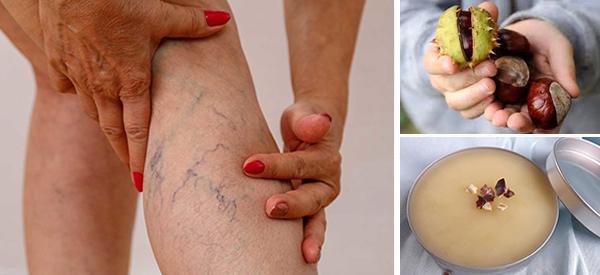
How To Treat Varicose Veins With Chestnuts
The Horse Chestnut (Aesculus hippocastanum) is a deciduous tree that is native to the Balkans but is now found growing in Europe, Asia, North America, Australia, and New Zealand. The name “chestnut” is used for both the plant or tree and the nut or seed that they produce.
Many people are familiar with chestnuts as food or treat in their roasted or candied form. However, this plant offers so much more, and its leaves, flowers, bark, and seeds / ‘nuts’ have been used for centuries to prepare natural medicines.
The primary health application of chestnut is for the health of the circulatory system and the veins and, specifically, to combat varicose and spider veins.
How Does Horse Chestnut Work?
The main active ingredient in chestnut is aescin at a level of 16 – 20%. Aescin has been the subject of multiple clinical studies and this research has shown that chestnut is effective in:
- Reducing inflammation
- Alleviating circulatory problems affecting the legs
- Reducing varicose veins.
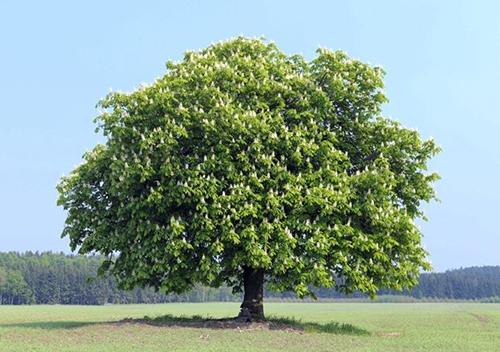
The Benefits of This Plant
The primary medicinal benefit and use of Horse Chestnut are in the treatment of poor circulation in the legs. This is referred to as chronic venous insufficiency (CVI). This condition leads to a range of symptoms and conditions in the legs including:
- Swelling, particularly in the lower legs, ankles, and feet
- Pain
- Varicose and/or spider veins
- Cramps
- Itching
- Leg ulcers
- Weakness in the legs.
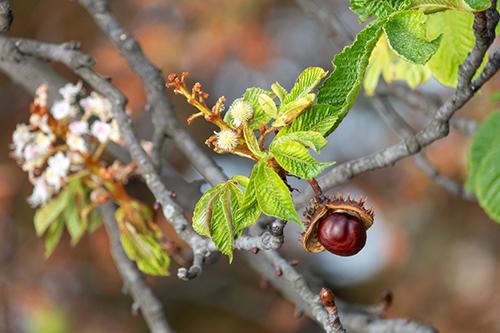
While studies show that Horse Chestnut extract reduces CVI symptoms, it takes 6 to 8 weeks to take effect when the extract is taken by mouth. It is also still not clear if this is a medium- and long-term treatment or if it is only a short-term solution.
Horse Chestnut and Varicose Veins
Varicose veins are a common symptom of chronic venous insufficiency (CVI) although they can have other causes. In addition to looking unsightly, varicose veins can be very painful and result in a range of unpleasant symptoms.
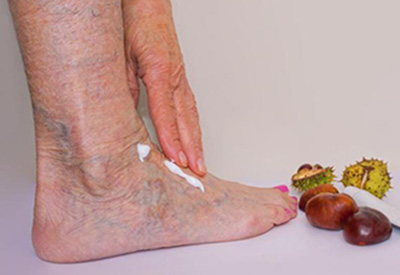
Thanks to Horse Chestnut’s ability to improve the tone of veins and blood flow, and to reduce inflammation, research has shown that using a combination of tablets and aescin gel reduced pain, swelling, heaviness, and discoloration in 58% of study participants.
Preparations Made from Horse Chestnut
There are a range of types of preparations made from chestnuts: gel/cream/ointment, drops, essential oil, balm, tablets/capsules, and tincture.
Horse chestnut extract products that are ingested usually contain 16 – 20% aescin. Preparations that are applied topically, such as creams, contain a far lower percentage of aescin: approximately 2%.
A combination of capsules or tablets and cream or ointment is suggested by several researchers and manufacturers as an optimal regimen for the treatment of varicose veins.
How to Make Your Own Horse Chestnut Oil
When you are using horse chestnut for varicose veins, the most popular preparation to use is an ointment or salve that is rubbed onto the affected area. Although you can buy this product both in-store and online, you can also make your own.
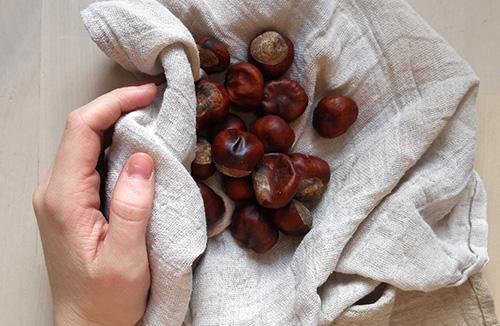
Ingredients:
- Dried Horse Chestnuts
- 500 milliliters olive or coconut oil.
Method:
- Grind the chestnuts as finely as you can and remove the larger pieces from the powder. You need 100 grams / 3 ½ ounces of powder.
- Pour the oil into a glass bowl, add the powder, and stir well.
- Place the bowl over a pot of water or fill a pot ¼ full of water and place the bowl into the pot on top of a cloth.
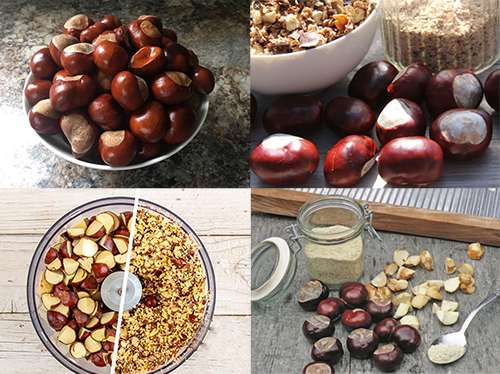
- Heat the oil over low to medium heat (110 – 1200 F or 40 – 490 C) for two hours. If the temperature is too low, it will not infuse properly, and if it gets too hot the oil will burn. You need to monitor it.
- Allow it to cool a little then strain the warm oil through a filter paper or cooking muslin to remove all the chestnut particles.
- Pour the oil into a bottle, close it with a lid or cork, and label it.
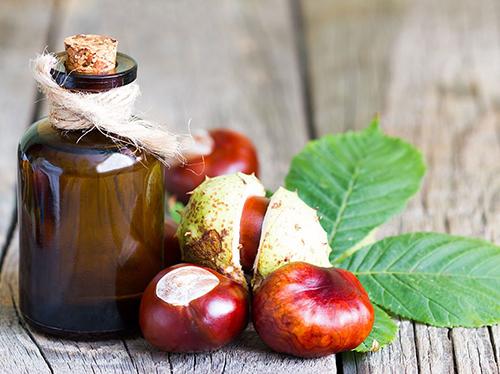
You can turn your oil into a salve by adding 1 cup of melted beeswax to it. Use 15 grams or 3 ½ teaspoons of beeswax to 80 milliliters of oil.
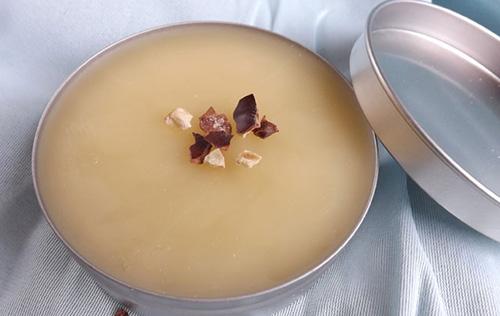
Application:
Apply the oil to the affected areas once or twice a day and massage it gently into the skin and tissue.
Shelf life and storage:
Horse Chestnut Oil will remain fresh and effective for up to three years if stored in a cool, dark place.
Cautions and Warnings
The fact that Horse Chestnut products are natural and plant-based, does not mean they are 100% safe or suitable for everyone. The following factors should be kept in mind:
- Ingesting raw Horse Chestnut is toxic and can be fatal
- Some individuals may experience an allergic reaction to topical applications
- Horse Chestnut should be avoided by women who are pregnant or breastfeeding.
In addition, these products may interact with certain medications: diabetes drugs, blood thinners, nonsteroidal anti-inflammatory medications, and Lithium. Finally, given that Horse Chestnut thins the blood, individuals who are scheduled for surgery should stop using the plant at least two weeks before surgery.
There is no doubt that Horse Chestnut improves chronic venous insufficiency and the appearance of, and symptoms associated with varicose veins.
However, you would be well advised to consult your healthcare provider before you start to use a Horse Chestnut preparation. This is particularly the case if you are currently taking any medications or suffer from a medical condition. Even plant-based, natural remedies can pose risks for certain individuals.
Once you know it is safe for you, you can select the preparation that is best for you and your health needs.
You may also like:
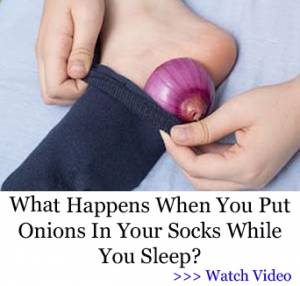 If You Have This Tree in Your Backyard, Don’t Cut it Down
If You Have This Tree in Your Backyard, Don’t Cut it Down
How to Make Bark Bread from a Tree that Grows on Almost Every Street in America (Video)
25 Little Known Medicinal Uses for Tree Bark

Thanks for article , one question do i grind the chestnut shells with the insides or just the meat of the chestnut.
Hi Jose,
Thank you for your comment.
You grind the chestnuts without the shell.
God bless!
Nicole, Do you make this that I can buy from you?
Hi Eileen,
Thank you for your interest in our work.
At the moment, we are not selling this product.
We only have the recipe.
God bless!
When you say ro grind the chestnuts, do you mean the shell also?
Hi M R,
Thank you for your interest in our work.
The chestnuts should be ground without the shells.
God bless!
Do you sell the salve? If not, can you recommend a good one please?
Hi Diana,
Thank you for your interest in our work.
At the moment, we are not selling this product.
We only have the recipe.
God bless!
How can I buy this chestnut oil already prepared for me?
Hi Shaul,
Thank you for your interest in our work.
You can find a great variety of Chestnut Oils on Amazon.
God bless!
Nicole, you list the Nuts, leaves and bark for medicinal preparations. would the sap from the tree also be applicable? That would also apply to other trees too.
Hi Adolph,
Horse chestnuts can be toxic and cause serious gastrointestinal problems if consumed raw by humans. And even honeybees can be killed by feeding on horse chestnut nectar and sap.
God bless!
Wow! This could not have come at a better time. I was diagnosed with CVI years ago and then came LDS. I’ve been wearing compression stockings ever since. But lately I have one area that has been itching terrible. And becomes very restless at night. I definitely want to try this one as soon as possible. Will just have to search out the horse chestnuts. Thank you so much!
Hi Pamela,
Thank you for your comment.
Please let us know how the chestnuts oil/salve worked for you.
Wish you the best of health
God bless!
There are several chestnut trees in my backyard. How do I know for certain they are horse chestnut trees?
Hi Carrie,
Common chestnut is decorative because of its large, spreading habit. Horse chestnuts leaves are more coarse, but the flowers are showy. Common chestnut has less significant flowers, which appear in June, as opposed to May for horse chestnut.
One other important difference between Horse Chestnut and Chestnut is that for the first one there will be one or two nuts in a capsule with or without short, widely spaced spines, and for the Chestnut, the nuts (usually more than one) enveloped in an extremely spiny burr.
God bless!
Can one infuse jojoba oil also?
Hi Alica,
Yes, Jojoba Oil is a good substitute.
God bless!
Thank you for your article, very interesting. Question, can you use buckeyes Instead of horse chestnuts?? Their in the same family ( I am in Ohio, and buckeyes are a dime a dozen)
If not where can I buy horse chestnuts??
Thank you, God Bless
Holly
Hello everyone,
Got an important one for clarification:
Are all chestnut seeds appropriate for making tinctures out of them or just the ones which are edible anyway?
Is there a risk of poisoning yourself by ingesting common chestnut tincture?
Thanks a lot for your well-being!
Love,
Ben
Do you have any tricks for grinding the chestnuts? I have dried them, but they are so hard that it seems impossible to cut or grind them with the tools I have.